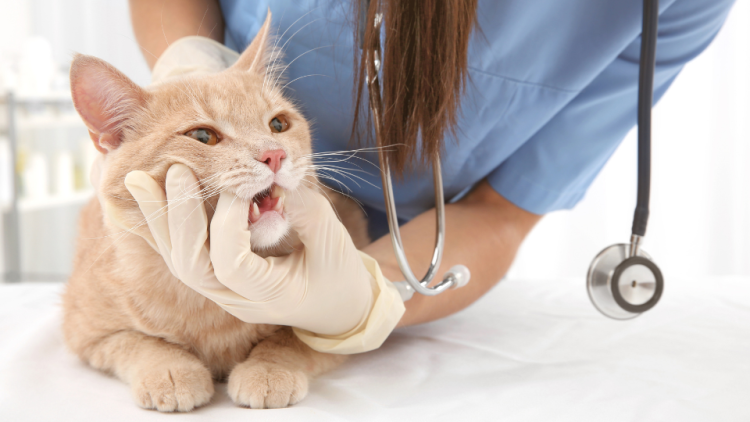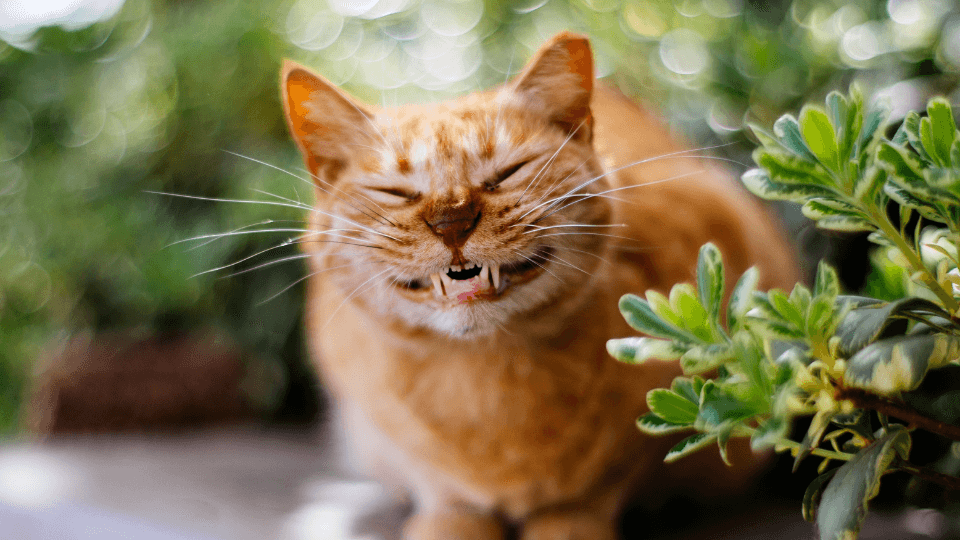Your cat might look cute and cuddly but if you take a peak in their mouth, you’ll see that they have razor-sharp teeth that are suited for a carnivorous lifestyle. Your feline friend’s teeth are just as important to their anatomy as they were for their ancestors, but how much do you really know about what’s going on in their mouth?
Keeping track of your cat's dental health is essential to preserving their general health and wellbeing. In this post, we're providing five amazing cat teeth facts to help you learn more about your pet’s dental health.
Here’s what we’ll cover:
- Fascinating Cat Teeth Facts
- 1. Kittens have more teeth than humans
- 2. Cats have canine teeth, too
- 3. Domesticated housecats have the mouth of wild hunters
- 4. Cats don't get cavities
- 5. 90% of cats over the age of 4 suffer from dental problems
- The Basic Anatomy of Cat Teeth
Fascinating Cat Teeth Facts
1. Kittens have more teeth than humans
Kittens have 26 decicudous or “milk” teeth while humans have only 20 “baby” teeth, though mature felines have 30 permanent teeth and humans have 32. By comparison, dogs have quite the mouthful, with 28 teeth as puppies and 42 in adulthood.
2. Cats have canine teeth, too
"Canine" is a term that refers to fang-like teeth (humans have them, too). Cats use their four large canine teeth to puncture, rip, and tear apart food or prey.
Domesticated housecats have the mouth of wild hunters
Although domestic cats mostly consume specialized dry food and wet food provided by their owners, their teeth are still equipped for hunting. While cat canine teeth are designed to puncture the skin of prey, the premolars and molars are used to grind up bones in their meal.
In addition to hunting teeth, cats also have grooming teeth. They can use their incisors (the tiny teeth between the large canines), to gnaw on fur, which comes in very handy when they're grooming themselves.
4. Cat teeth don't get cavities
Cats do not develop the types of cavities that humans do, i.e. dental caries that requires drilling out and filling. This is partially due to the shape of cat teeth. A cat tooth does not have horizontal surfaces as humans and dog teeth do, hence cats do not get carious lesions. That said, they can get other types of lesions, such as feline resorptive lesions.
90% of cats over the age of 4 suffer from dental problems
According to Cornell College of Veterinary Medicine, feline dental disease is very common, affecting between 50% and 90% of cats above the age of four. So although felines don't get cavities, they are highly prone to gingivitis (gum disease), stomatitis, periodontal disease, and feline tooth resorption (resorptive lesions) — most of which are caused by inadequate dental care and plaque formation. These oral health issues can cause a variety of symptoms ranging from bad breath to tooth loss and decay, as well as a number of oral diseases if left untreated.

Regular dental care for your cat is the best way to prevent plaque and tartar build-up and ensure your pet has healthy teeth. This means that besides learning how to brush cats' teeth (never use human toothpaste because it can be harmful to your pet) and following other dental care tips for cats, you will also need to take your pet for regular dental check-ups and teeth cleaning.
Veterinary dental work isn’t cheap. In fact, if your four-legged friend should need dental work, you will likely see a bill that’s significantly higher than what you get from your own dentist. For instance, a cat dental cleaning costs about $300 to $700, whereas feline periodontal disease costs an average of $768 to treat.
Fortunately, cat health insurance can help. Dental illness coverage varies across providers, so be sure to use Pawlicy Advisor to compare different plans and find the best pet insurance with dental coverage for your cat.
The Basic Anatomy of Cat Teeth
Want more information on cat teeth? Here's a basic overview of the feline dental anatomy to satisfy your curiosity, followed by answers to some of the most common questions we get about cat teeth.
Your cat’s teeth are made up of several parts:
- The crown is the portion of the tooth that’s visible above the gum line
- Dentin, the softer area of the tooth, is shielded by a protective layer called enamel
- The area of the tooth located below the gum line is the root of the tooth. It is covered in a thin dental tissue coating known as cementum. The pulp, which is located inside the tooth, is comprised of blood vessels and nerves.
How many teeth do cats have?
Your cat's age will determine how many teeth they have. Kittens are born toothless and by the time they are six months old, they have four cat canine teeth, four molars, ten premolars, and 12 incisors. No matter their breed, all adult felines have the same number of teeth.
Do cats have baby teeth?
Like many other mammals, felines also develop a set of baby teeth that begin to erupt around two weeks of age. These teeth are more commonly known as milk teeth, or deciduous teeth.
When do cats teethe?
Baby teeth appear for the first time when a kitten is three to four weeks old. The primary canines and incisors come in first, followed by the rest of the teeth shortly after.

Do cats lose their baby teeth?
Yes, but while it takes people years to lose all of their deciduous teeth and wait for their adult ones to erupt, the teething process for kittens happens considerably more quickly. In fact, cats go through two sets of teeth by the time they are six months old.
When do cats lose their baby teeth?
Kittens start losing their baby teeth around three to four months old, with the feline canine teeth falling out around the six month-old mark. Counting the number of adult teeth that have grown in is one way to tell how old a kitten is. **Before a cat’s first birthday, they should have all their adult teeth in place.
During the kitten teething process, you may not even notice that your feline friend is losing teeth until you see one on the floor or in their bed. This is normal, so don't worry! Most cats tend to swallow their teeny teeth but, it doesn't cause any harm. Common signs that indicate a kitten is teething include:
- Sore gums
- Reduced appetite
- Mild bleeding of the gums
- Pawing at the mouth
Do cats lose teeth as they get older?
Older cats occasionally lose teeth, but this is not normal. While losing baby teeth is a routine part of kitten development, tooth loss in senior felines is often a sign that something is not right with your pet’s oral health. The most common causes of tooth loss in senior cats include dental problems, nutritional imbalances, and injuries.
